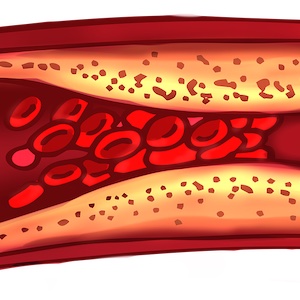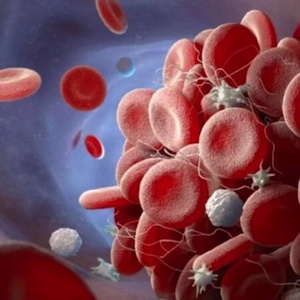Reviews
Vol. 2 No. 2 (2023)
The new era of anticoagulation: factor XI and XII inhibitors

Publisher's note
All claims expressed in this article are solely those of the authors and do not necessarily represent those of their affiliated organizations, or those of the publisher, the editors and the reviewers. Any product that may be evaluated in this article or claim that may be made by its manufacturer is not guaranteed or endorsed by the publisher.
All claims expressed in this article are solely those of the authors and do not necessarily represent those of their affiliated organizations, or those of the publisher, the editors and the reviewers. Any product that may be evaluated in this article or claim that may be made by its manufacturer is not guaranteed or endorsed by the publisher.
Received: 30 March 2023
Accepted: 22 May 2023
Accepted: 22 May 2023
2321
Views
901
Downloads
Similar Articles
- Giovanni de Gaetano, Chiara Cerletti, At the age of three , Bleeding, Thrombosis and Vascular Biology: Vol. 3 No. 3 (2024)
- Giovanni de Gaetano, Artificial intelligence, platelets and aspirin , Bleeding, Thrombosis and Vascular Biology: Vol. 3 No. 1 (2024)
- Mehrie H. Patel, Alok A. Khorana, New drugs, old problems: immune checkpoint inhibitors and cancer-associated thrombosis , Bleeding, Thrombosis and Vascular Biology: Vol. 3 No. s1 (2024)
- Mosaad Almegren, Clinical and radiological characteristics of cerebral vein thrombosis: a retrospective study , Bleeding, Thrombosis and Vascular Biology: Vol. 2 No. 3 (2023)
- Massimo Franchini, Daniele Focosi, The changing landscape of treatment for acquired hemophilia A , Bleeding, Thrombosis and Vascular Biology: Vol. 4 No. 1 (2025)
- Giovanni de Gaetano, Author's Reply. Da la scheggia rotta usciva insieme parole e sangue: an unusual case of bleeding and the metaphor of a clinical trial , Bleeding, Thrombosis and Vascular Biology: Vol. 3 No. 3 (2024)
- Gianfranco De Girolamo, Luca Sarti, Sonia Cecoli, Karin Bonora, Chiara Ajolfi, Francesco Bellelli, Valeria Coluccio, Gualtiero Palareti, Marco Marietta, Safety and efficacy of treatment with vitamin K antagonists in patients managed in a network of anticoagulation services or as routine general care , Bleeding, Thrombosis and Vascular Biology: Vol. 1 No. 1 (2022)
- Agnes Y.Y. Lee, Venous thromboembolism treatment in patients with cancer: reflections on an evolving landscape , Bleeding, Thrombosis and Vascular Biology: Vol. 3 No. s1 (2024)
- Paolo Prandoni, New perspectives for prevention of the post-thrombotic syndrome , Bleeding, Thrombosis and Vascular Biology: Vol. 1 No. 1 (2022)
- Giovanni de Gaetano, Well begun is half done , Bleeding, Thrombosis and Vascular Biology: Vol. 1 No. 3 (2022)
You may also start an advanced similarity search for this article.











